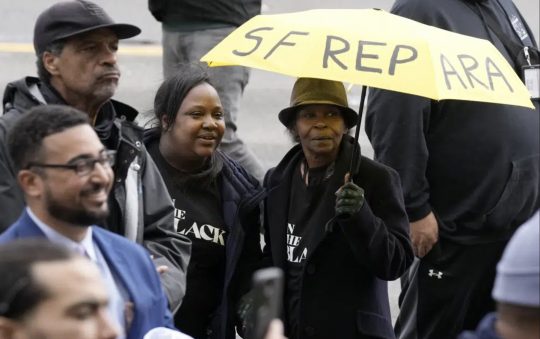
Economists advising The California Task Force to Study and Develop Reparations Proposals for African Americans have developed economic formulas that project the reparations owed to Black Californians who are descendants of people enslaved in the United States are likely to exceed $800 billion.
Three of five harms were used in the calculations conducted by a five-member panel of economic experts: health, disproportionate housing discrimination, Black mass incarceration and over policing are “from a long list of harms” the state “is a least partially responsible for,” said Dr. Thomas Craemer, a professor of public policy at the University of Connecticut and one of the experts involved in the assessment.
Craemer spoke last week at the task force’s 14th meeting held in Sacramento on March 29 and 30. The figures also applies to forebears who survived legal segregation, Jim Crow discrimination and other social and economic injustices.
Related Links:
https://lasentinel.net/reparations-state-clo-proposes-paths-for-payments.html
“These are harms for which we thought that we’d have data, that’s one criterion,” said Craemer. “The other is that they are closely related to the actions of the state of California to make our estimates more defensible in the face of challenges that will undoubtedly arrive once the proposal is made public.”
The economic experts’ analysis and final recommendations for the Task Force regarding calculations of reparations and forms of compensation and restitution were presented by Craemer and Dr. William Spriggs.
Spriggs appeared remotely in front of the task force. He is the former chair of the Department of Economics at Howard University. He now serves as chief economist to the AFL-CIO.
The health harm calculations were determined by the annual loss to “Black, non-Hispanic Californians” from health disparities by computing the 7.6 year-life expectancy gap based on the Value of Statistical Life in the United States. It is a concept that is appropriately measured by estimating how much society is willing to pay to reduce the risk of death, Craemer said.
“That is what statisticians use to evaluate how much each individual places value on their life,” Craemer said. “We then divide the value associated with the gap by the average Black, non-Hispanic Californian expectancy of 71 years to obtain an annual estimate of the loss to Black, non-Hispanic Californians from health disparities.”
The experts use the Black non-Hispanic Californian category because they didn’t have a U.S. Census count available for Black Californians who can trace their ancestors back to slavery in the United States.
Black mass incarceration and over-policing calculations were derived from how many Black, non-Hispanic Californians were arrested for drug felonies above the population percentage during the “War on Drugs” from 1970 to 2020. It was multiplied by the average prison term for drug offenses and by the average annual California State employee wages to arrive at the estimated total owed to Black Californians who qualify for reparation payments.
Housing discrimination was determined by calculating the average of the Black non-Hispanic Californian wage gap for 1930, 1980, 2019. The amount gave the experts the wealth disparity from all forms of housing discrimination, Craemer said.
“I should mention that what we are estimating is not reparations. What we are estimating are losses to the African American descendants of slaves in the United States,” Craemer said. “Our calculations could be used to come up with determinations of reparations but it’s not necessarily identical. The task force can go above and beyond because some losses are framed difficult to estimate. (Such as) pain and suffering.”
The last two atrocities – unjust property taken by eminent domain and devaluation of Black businesses — are not readily available in the calculation model because of lack of data, Cramer said. The 1980 amount minus the 1930 amount provides an estimate of the effect of redlining only.
Task Force chairperson and Los Angeles attorney Kamilah V. Moore said some published news headlines have put out misinformed information about the experts’ final calculations. “The task force has yet to determine a final amount,” Moore said.
The numbers are not concrete, leaving room for the members of the task force to evaluate, modify, or eliminate any of the experts’ findings. Spriggs said the experts are still in “deliberations.”
“I think it’s improper to prejudge what precise number we may recommend, but we’re only giving you expert advice on these specific harms. The task force has full latitude to ignore it, to add it, or take into consideration addressing tangible harms,” he added.







